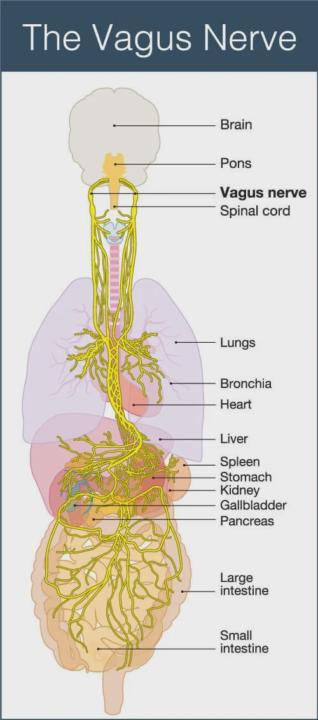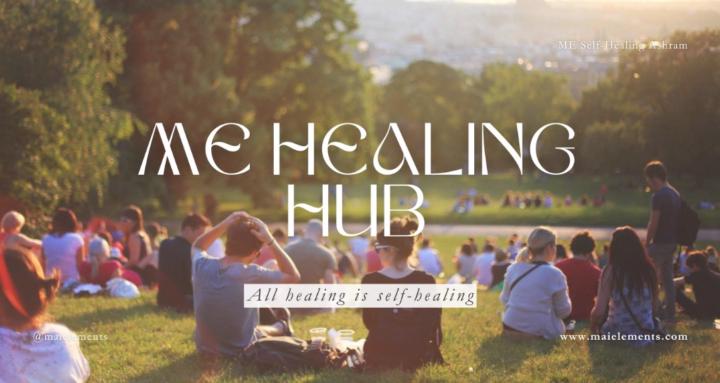
Write something
The Emotion Release Everyone is asking about.
Visceral Fascia Release - This is the gentle self-massage for internal freedom. Your organs aren’t floating freely inside you — they’re wrapped, supported, and suspended by fascia, which connects to your spine, ribs, pelvis, and diaphragm. When that fascia becomes tight from stress, inflammation, surgery, posture, or emotional holding, it can pull your rib cage, restrict breathing, affect digestion, and even limit your range of motion in unexpected areas. By gently releasing tension around your belly and diaphragm, you not only help your organs “breathe” better, but you also improve blood and lymph flow, calm your nervous system, and create space for emotional release. Enjoy your practice! 💡 Before you start — take your “before” test! You’ll be surprised. 1. Sit on the edge of a sofa, bench, or bed. 2. Bring the soles of your feet together (or adapt if that’s not comfortable). 3. Sit tall, then fold forward without forcing. Notice how far you can go — this is your starting point. After practice — Re-Test Sit back up and repeat your forward fold.Notice if you have more space without touching anything in your groin or hamstrings — this is your visceral fascia letting go. 📸 Share your progress and tag @maielements! Extra Notes: - Avoid practice on a full stomach (wait at least 2 hours after eating). - Avoid deep abdominal work during menstruation or with certain medical conditions — listen to your body. - This can be a beautiful pre-bedtime ritual to calm the mind and support deep sleep. - Emotional releases are normal — breathe through them, extend your exhale, and allow your system to settle. ✨ This practice is part of Week 2 in our MSA monthly challenge. We began with external breathing and have now prepared the nervous system enough to go deeper into internal release.If you’d like to join our daily step-by-step practices and learn small but deeply meaningful holistic healing tools each day — you’re welcome to join us!
💨 Bubble Breathing Practice
A simple doorway to calm your nervous system Your body breathes— but does it remember how to relax? This practice uses gentle bubble-blowing to guide you back into diaphragmatic breathing, making your exhale steady, felt, and functional. It helps: 🧠 Shift your nervous system: Slow, resistance-based exhaling activates the vagus nerve, lowering sympathetic tension and inviting your body into a rest-and-repair state. 🌬️ Rebuild natural breath: The water resistance encourages you to exhale from your belly, not your throat—reducing shallow breathing and tension. ✅ How to Begin: You’ll need: - A thin straw - A cup with ~2 inches of water - A quiet space & a steady sitting or standing position Steps: 1. Inhale through your nose, letting your belly expand (diaphragmatic breath) 2. Seal your lips around the straw, and exhale gently into the water 3. Aim for small, steady bubbles—stay relaxed, no force 4. Start with 10–30 sec exhales, repeat for 3–5 breaths per round 🎵 Optional: Add a soft sound (like “mmm” or “oooh”) during exhale to support voice and resonance. ⏰ Suggested Practice Just 3–5 minutes a day—ideal for: 🌅 Morning breath awareness 🗣️ Voice warm-ups 😌 Calming yourself during stress or overwhelm Each bubble is the sound of your body releasing tension and returning to safety. If you’d like deeper guidance, structured instruction, and tools like worksheets, join us in MSA—where we move together toward healing, gently and with care 🌿

Let’s talk about the .2 mm surface of your skin
The opening workshop for MSA’s July challenge—The Heavenly Unravel—is now up in the Replay Classroom. This is where we begin our journey through the skull, face, neck, shoulders, and upper arms—where tension hides, and healing begins. And here's a little note from me to you. 💬 I say this with full compassion, no judgment—because I’ve been there. I started Botox and fillers in my early 20s. Not because I was vain, but because I was deeply insecure. I didn’t feel at home in my own face and body. I thought if I could just “fix” a few things on the outside, I would finally feel better on the inside. But here’s the truth I’ve had to live into: Even the most expensive serum… even the sharpest needle… cannot override a mind that’s stuck in self-rejection. Botox may soften the appearance of wrinkles(when I was in my early 20ssss???), yes—but it also paralyzes nerve signals, silences the body’s expressions, and interrupts your natural feedback loop. You might look “youthful” (again I was in my early 20ssssss, how am I not looking youthful......)but you lose connection to the messages your body is trying to send. And that disconnection has a cost. 🌿 It wasn’t until I shifted my mindset—until I learned to listen to and love the living architecture beneath my skin—that I finally started to feel beautiful. I’m now 38. And I can honestly say I’ve done nothing non-natural for over a decade. No Botox. No fillers. No high-end surface fixes. And for the first time, I feel proud. Not because of how I look—but because of how I relate to myself. Your beauty is not broken. Your body is not lacking. You don’t need to freeze your face to feel worthy. You just need to come home to your structure, your flow, and your truth. That said, if you’re choosing any procedure to you for you from a grounded place, with clear self-trust—then that’s your truth. And I honor that. What I'm offering here is not a rejection of aesthetic tools—it’s a reconnection with the wisdom underneath. The part that’s always been trying to guide you back home.

The Science of Ocean Breathing
The Calming Science of Ocean Breathing 🌊 In week one of our Breathe Into Being Challenge, we’re wrapping up the three categories of breathwork — Coffee(energizing), Water (balancing), and Milky (soothing) — with one of my favorite techniques: Ocean Breathing paired with a 4x8 rhythm. You may have heard of this as Ujjayi in yoga. Ocean breathing creates a gentle constriction at the back of the throat, producing a soft wave-like sound — like you’re listening to the tide in your own body. It’s simple, subtle, and incredibly powerful. Why Ocean Breathing Works 1. Slows Your Breathing RhythmThe steady, extended exhale lengthens the pause between breaths, sending a clear signal to your brain and body: We are safe. This activates your parasympathetic nervous system — the “rest and digest” mode — shifting you out of stress. 2. Balances Oxygen & CO₂ LevelsA longer exhale gently raises carbon dioxide levels in your blood. This is not only safe, but essential for optimal oxygen delivery to your tissues. It also trains your body to be more comfortable with slower breathing patterns. 3. Massages the Diaphragm & Core MusclesUnlike shallow chest breathing, ocean breathing engages your diaphragm — the dome-shaped muscle beneath your ribs. This eases strain on your shoulders and neck, improves posture, and can even help with jaw tension and headaches. Your Vagus Nerve Loves This 💙 Ocean breathing is a direct way to strengthen your vagal tone — the resilience and responsiveness of your vagus nerve. This nerve connects your brain to your heart, lungs, and digestive system, influencing everything from heart rate to emotional regulation. It’s stimulated in three main ways during ocean breathing: - Prolonged Exhalation – Signals calm and safety. - Gentle Throat Constriction & Humming – Vibrations send soothing messages along the nerve. - Diaphragmatic Movement – The downward motion of the diaphragm “massages” the nerve.

1-4 of 4
powered by

skool.com/me-healing-hub-6397
This is your free community space for kindred spirits beginning or deepening their journey toward peace, authenticity, and holistic well-being.
Suggested communities
Powered by
